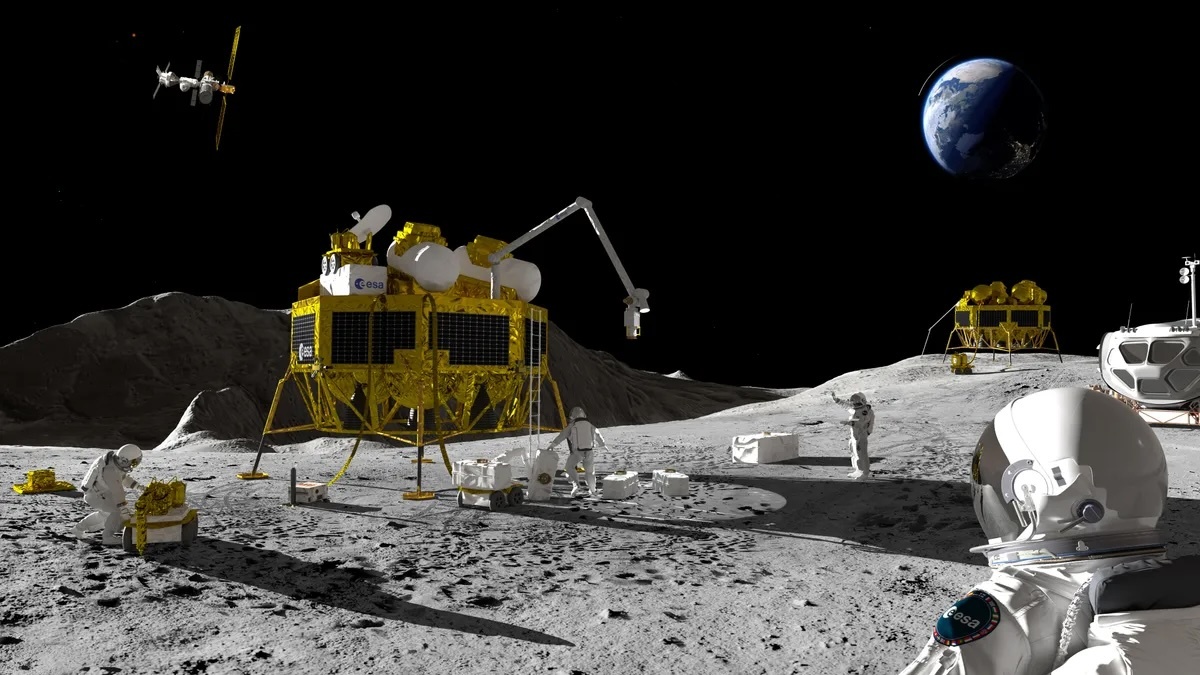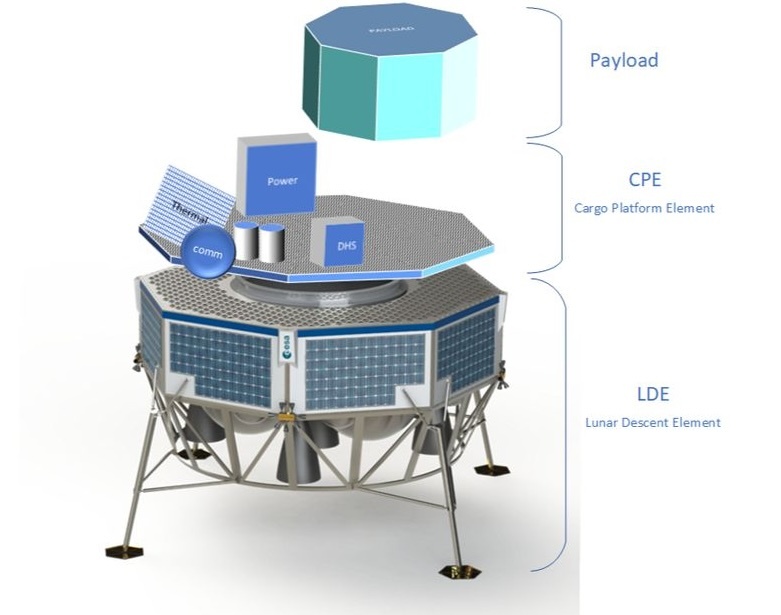ESA is also working on a "Moonlight" navigation and communication capability that would allow high-speed connection with the Gateway space station around the moon, whose development NASA is spearheading as part of its Artemis program.
24.07.2024
"No area is off-limits for Argonaut; the spacecraft will be able to land at any region on the moon."

Artist's impression of a moon exploration scenario. (Image credit: ESA-ATG)
A European moon lander being developed to provide the continent autonomous access to the moon is targeted to launch in 2031, according to a development call published last week by the European Space Agency (ESA).
The robotic lander, called Argonaut, is expected to lift off on an Ariane 6 rocket, which after a long series of delays made its debut flight on July 9.
ESA wants Argonaut to perform multiple deliveries of cargo and science instruments to the moon. The lander will be capable of ferrying up to 4,600 pounds (2,100 kilograms), including food and water for future astronauts, anywhere on the lunar surface, with a precision of better than 330 feet (100 meters), according to the mission description.

Diagram of ESA's robotic Argonaut moon lander, which is slated to launch for the first time in 2031. (Image credit: ESA)
"No area is off-limits for Argonaut; the spacecraft will be able to land at any region on the moon," the description states.
ESA forecasts five Argonaut missions in the 2030s, with each one spanning a week to a month from launch to landing. The moon lander has three main components: a lunar descent element responsible for flying to the moon and landing; the payload, which could be a rover, science instruments or other gear; and a cargo platform, which serves as the interface between the other two elements.
In May, ESA awarded a contract to Florida-based Redwire Corporation to develop a robotic arm prototype for Argonaut, which will support its logistical operations by offloading, retrieving and positioning objects.
The 2031 launch date was first reported on July 17 by European Spaceflight. The website noted that ESA has already finished studies for the so-called "European Charging Station for the Moon," which would be a system launched aboard Argonaut and serve as a gas station on the moon.
